Understanding Market Trends and Valuation
In the realm of precious metals, comprehending market trends and valuation is crucial for successful transactions. The prices of gold and silver are influenced by a myriad of global economic factors. For instance, inflation rates can significantly impact the value of these metals. As inflation rises, the purchasing power of currency decreases, often leading investors to seek refuge in gold and silver, thereby driving up their prices.
Additionally, currency fluctuations play a pivotal role. When the value of the U.S. dollar weakens, the prices of gold and silver typically increase, as these commodities are priced in dollars. On the other hand, a strong dollar can suppress their prices. Geopolitical events, such as conflicts and political instability, also contribute to market volatility, often causing a surge in demand for precious metals as safe-haven assets.
Monitoring these market conditions and analyzing historical data are essential steps in making informed selling decisions. By understanding past trends and current economic indicators, sellers can better predict future price movements and optimize their sales timing.
Accurate valuation of gold and silver bars hinges on several factors, including purity and weight. Gold and silver bars are usually marked with their purity level, expressed in fineness (e.g., .999), which signifies the percentage of pure metal. The weight, typically measured in troy ounces, directly affects the value. Current market prices, which fluctuate daily, are also a critical component. Utilizing real-time prices from reputable sources ensures that sellers receive a fair market value for their precious metals.
Staying updated with real-time market prices is paramount. Reliable sources, such as financial news outlets and dedicated precious metal trading platforms, offer up-to-date information that can guide valuation and selling strategies. By leveraging these insights, sellers can enhance their profitability and navigate the complexities of the precious metals market with confidence.
Choosing the Right Selling Platform and Ensuring Secure Transactions
When selling gold and silver bars, selecting the appropriate platform is crucial to maximizing profit margins while ensuring secure and trustworthy transactions. Various platforms are available, each with its own set of advantages and drawbacks.
Online marketplaces, such as eBay or specialized bullion websites, offer the convenience of reaching a wide audience. These platforms can potentially yield higher prices due to competitive bidding. However, they also pose risks, including fraudulent buyers and the challenge of verifying the credibility of the transaction. Ensuring secure transactions on these platforms involves using insured shipping, maintaining comprehensive records of the sale, and selecting buyers with positive feedback and verified identities.
Local dealers present another viable option, often providing a straightforward and immediate transaction process. The main advantage is the ability to conduct face-to-face deals, which can reduce the risk of scams. However, local dealers may offer lower prices compared to online platforms due to overhead costs and their need to resell at a profit. To ensure a fair deal, it is advisable to compare offers from multiple dealers and verify their reputation through customer reviews and industry certifications.
Auction houses can be an excellent choice for selling rare or high-value bars, as they often attract serious collectors willing to pay a premium. The downside is the longer time frame for completing sales and the fees associated with auction services. It is important to choose reputable auction houses with a track record of successful high-value transactions and to thoroughly understand their fee structures.
Regardless of the platform chosen, researching and verifying the credibility of potential buyers is paramount. Utilize resources like the Better Business Bureau, industry associations, and online reviews to identify trustworthy buyers. Additionally, ensure all transactions are transparent and legally compliant by obtaining proper documentation, such as receipts and certificates of authenticity. Avoid common scams by being cautious of offers that seem too good to be true and by never sharing personal or financial information without verifying the buyer’s legitimacy.
Practical tips for negotiating the best prices include staying informed about current market rates, being prepared to walk away from unfavorable offers, and leveraging multiple bids to secure a better price. By following these guidelines, sellers can navigate the complexities of the gold and silver market, ensuring profitable and secure transactions.



